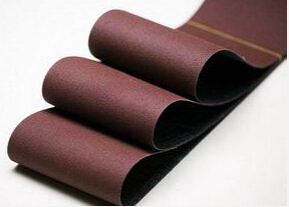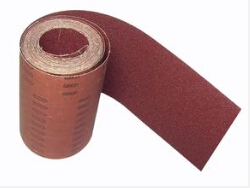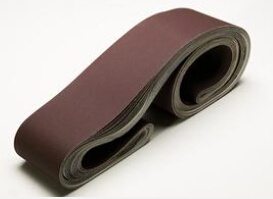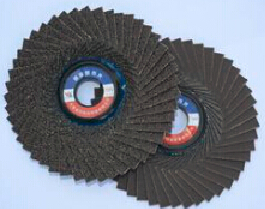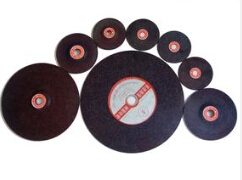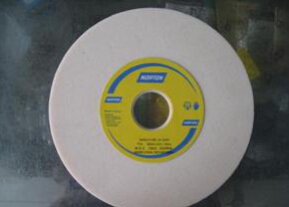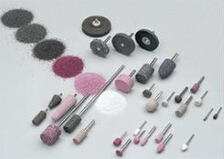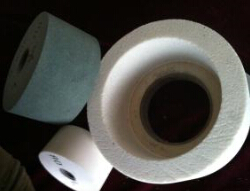Sandblasting Abrasives
Zhongsen Editor 2023-08-20Sand blasting is to use abrasives to grind and impact the surface of the machined object to different degrees through the abrasive, so that the surface of the machined object can obtain cleanliness and different roughness, so as to improve and enhance the mechanical performance of the machined object, reduce the fatigue of the machined object, and extend its service life.
Therefore, the selection of sand blasting abrasives is also required for sand blasting. Not all abrasives are suitable for sand blasting. Sand blasting abrasives shall meet the following properties and characteristics:
1. Short grinding time, high efficiency and low price;
2. Moderate hardness, good toughness, good self sharpening, low sand consumption and recycling;
3. The chemical property should be stable, wear-resistant and resistant to acid and alkali corrosion;
4. Sharp edges and corners shall have grinding force;
5. Sand blasting environment shall be good.
When it comes to sandblasting, many people will think of garnet, but there is also a kind of brown corundum that is very suitable for sandblasting. Brown corundum is a kind of natural environmental protection abrasive. Because of its high hardness, good toughness, high proportion and no harmful substances and other mineral characteristics, it occupies a pivotal position in the sand blasting industry. The percentage of sand blasting in process use is 5%. Therefore, it can be seen that the position of brown corundum is becoming more and more stable.
Sand blasting can be applied to many aspects, such as rust removal on the surface of parts, surface modification of small parts, or sand blasting on the joint surface of steel structure to increase the friction of the joint surface. Since the high-strength connection uses the friction between the joint surfaces to transmit the force, the quality of the joint surface is required to be high. At this time, the joint surface must be treated with sand blasting.
Brown corundum abrasive and garnet abrasive are widely used in sand blasting. There is a big difference between them.
1) The causes are different.
Brown corundum abrasive is an artificial corundum made from bauxite, coke (or anthracite) and iron filings after melting and reduction in an electric furnace above 2000 ℃, so it is named for this reason. The most common colors are brown and black. Garnet abrasives are made of large ores mined from rare ultra-high pressure metamorphic rocks through a series of processing links such as blasting, crushing, screening, magnetic separation and classification. It is a natural non-metallic ore. The colors are brown, black, red, green, etc.
2) Chemical properties are different.
The main component of brown corundum is AL2O3, with the content of 95% - 97%; The main components of garnet abrasive include about 38% SiO2, 22% FeO, 19% AL2O3, and some other components;
According to the different ingredients, the following differences are presented in characteristics:
The hardness of brown corundum abrasive is about 9.0, and the hardness of garnet abrasive is between 7.5 and 8.0. In terms of hardness, garnet is not as wear-resistant as brown corundum. However, as a sandblasting abrasive, garnet abrasive can not only completely remove the oxide layer, paint skin, oil stain, etc., but also well protect the sandblasted object from scratches. In terms of material protection, garnet abrasive is better than brown corundum. If brown corundum is used for sand blasting, it is easy to have sand inlay and reduce the working efficiency.
(b) Garnet abrasive has strong corrosion resistance. Because of the diversity of its chemical composition, its solubility in acid and alkali is 1%, which is inert. However, the fire resistance of brown corundum is better than that of garnet abrasive..
3) The market price varies greatly.
As the garnet abrasive is made of natural raw stone by crushing, as long as the quality of raw materials is good, it only depends on whether the processed particles are uniform and clean. While brown corundum is formed by mixing and melting bauxite, coke and iron filings in a certain proportion. First, the production cost is higher than that of garnet abrasive, and the market price is high. Brown corundum is called the tooth of industry. In the fire resistance and wear resistance industry, brown corundum abrasive plays an irreplaceable role in garnet abrasive. On the other hand, one of the requirements of sandblasting abrasives is low price. Brown corundum belongs to artificial corundum, with many production steps and labor consumption, so the price will be relatively high. Garnet sand is a natural mineral resource, and the price is relatively low.
Environment
Brown corundum sand blasting has moderate hardness, high toughness, good self sharpening, low sand consumption and can be recycled, and the surface finish of the abrasive parts is also good; Moreover, the chemical composition is stable, wear-resistant, acid and alkali resistant. The unique particle size of brown corundum can ensure that its particles reach a large force area when hitting the surface of the object, thus reducing the loss of abrasive.
Generally, brown corundum can be reused for 5-10 times. If the cutting ability is not lost after 10 times, the number of cycles will be more. When he can no longer cut, he can be recycled and used as cement additive in the construction industry. Sand blasting and rust removal with brown corundum abrasive has specific requirements for ambient temperature and humidity. Generally, the temperature is 3 ℃ higher than the large aerosol point, and the humidity is less than 85%. Therefore, in case of heavy fog, rain and dew, it is better not to conduct sand blasting for rust removal. It can not reach the use environment of brown corundum abrasive for sand blasting and rust removal. But using garnet will not be bothered by this problem.

